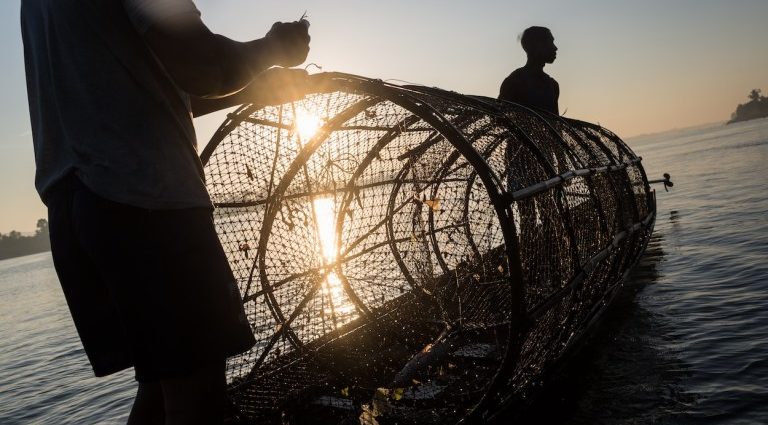Laos, known for its flowing rivers and abundant biodiversity, is at a critical crossroads. It sits at the heart of Southeast Asia, as part of a very dynamic region that has recently experienced multiple transformative changes to its socio-economic fabric alongside equally rapid climate change. This has created a major shift in opportunities and risks that justify revisiting a development model set two decades ago.
The ambitious drive for hydropower has transformed the country, bringing some positives alongside more challenging outcomes. One unanticipated consequence is how hydropower projects have contributed to the nation’s significant debt.
It is now critical that Laos pivots and diversifies its foreign revenue streams. By reducing its reliance on selling energy from hydropower, Laos could pursue alternatives that improve its current fiscal vulnerability while lowering environmental and social risks, and improving transboundary water security.
The Mekong River and its tributaries are lifelines, supporting biodiversity, livelihoods, climate resilience and businesses. The river also offers significant potential for producing hydropower and, not surprisingly, Laos has been eager to tap this resource and establish itself as a significant energy player in Southeast Asia – in line with the country’s aspirations for economic advancement.
With the government setting its sights on achieving a remarkable 12 gigawatts of hydropower capacity by 2025 and an ambitious 20GW by 2030, substantial investments have been funneled into hydropower infrastructure.
Laos’ pursuit of foreign investment and energy exports have been scrutinized by other riparian countries, gauging its conformity within the framework of Mekong River Commission procedures.
There was much discussion of the impact these hydropower projects would have on water flows, sediment flows, water quality and fisheries, with many analysts predicting that the projects developed through public-private partnerships would be financially profitable. And yet, overall, they have significantly contributed to Laos’ debt commitments that exceed 100% of the country’s GDP.
Hydropower was expected to drag its people out of poverty, but Laos is now walking a financial tightrope and teetering on the edge of a precarious economic situation.
Short-term benefits
Some positive changes have occurred, including temporary job opportunities and better infrastructure. However, these initial gains fall short of meeting needs, with the World Bank reporting in 2022 that total revenue from the power sector represents less than 10% of Laos’ fiscal revenue.
These short-term benefits of hydropower projects on the nation’s prosperity also need to be further assessed with a wider lens. Local communities have borne the brunt of the social costs through forced relocations and disrupted livelihoods.
This has had an especially harmful impact on women and ethnic minority groups, whose right to land tenure is not explicitly recognized within domestic law, prohibiting them from compensation or access to ancestral lands and livelihoods.
Not to mention these threats simply add on to existing impacts created by land-use change, unsustainable sand mining and the climate crisis. With fish migration blocked, sediment flows tumbling, and water levels changing more frequently in unpredictable and extreme ways, millions of people living downstream are increasingly impacted.

Fish catches are dwindling, fresh water for irrigation is running short, and the delta is sinking much faster than the sea is rising. Countless sectors have taken a hit, but agriculture, tourism and energy have been especially impacted.
Hydropower generation is also not immune to the uncertain effects of climate change in the region. Vulnerability arises from less predictable river flows, notably more frequent droughts and intense rainfall events, which bring significant risks to both the safety of hydropower projects and their electricity production.
Hydropower infrastructure, promoted as a climate mitigation measure, too often has counterproductive impacts on adaptation performance. Positive long-term climate outcomes are not always significant and may actually end up having unfavorable trade-offs for others.
Continuing on this capital-intensive, high-impact hydropower path bears the risk of further straining Laos’ financial situation and exacerbating tensions with its downstream neighbours. There are alternative, lower-risk, higher-reward paths for Laos that should be further explored.
A path forward
A new report by WWF proposes revisiting three undervalued sectors in Laos to bring in foreign revenue to drive development: agriculture, tourism and distributed energy. Investing in these sectors would create enabling environments for greener and more inclusive private-sector-led growth for Laos, with fewer risks stemming from uncertainty in power purchasing agreements.
It would also give the country a competitive edge on the sustainability front, boost efforts to meet its commitments under the Global Biodiversity Framework and support adaptation to the changing climate.

Laos’ agriculture and tourism sectors have already been recognized as areas that boast significant labor-force participation rates and foreign-exchange earning capabilities. The recent launch of the Lao-China railway will not only support increased exports of agricultural products to China, but also open doors to other rail-linked international destinations amid growing demand for healthy food and high-end tourism.
Alternatives can also be found in distributed renewable energy sources, like solar, wind and sustainably sourced biomass. These can be viable substitutes for some planned hydropower investments and complement existing installed hydropower capacity.
By developing renewable low-impact energy, Laos can strengthen its energy security while also securing a greener, more sustainable future and continue to deliver against its climate mitigation ambitions.
Laos has a tremendous opportunity to leapfrog ahead by diversifying its foreign-revenue strategy and, in doing so, the nation could become a model for integrated economic advancement, climate resilience and environmental conservation.

